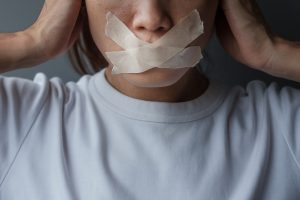Since around mid-2020, the Hong Kong government has initiated a series of measures aimed at curtailing civic society and the freedom of expression, impacting both the cultural and political spheres. Secretary for Security Chris Tang has emphasized the necessity to counteract what he terms “soft resistance” and has spoken of artistic creations as a “common modus operandi of those seeking to endanger national security.” This month the adoption of national security legislation to fulfill Article 23 of the Hong Kong Basic Law further consolidated this process.
The expanded scope of the new law aligns Hong Kong more closely with China’s comprehensive security approach. It not only prohibits acts of protest but also restricts free expression by outlawing speech deemed to have seditious intent. This includes criticisms deemed to create “hatred or contempt” for the Chinese system of government, thereby not only giving blanket protection for government officials but shielding from critique the policies and historical acts of the Chinese Communist Party. Punishments are being increased and legal safeguards regarding bail and access to legal representation are being diminished.
The impact of this is not likely to lead to more public censorship by the Hong Kong government. Books with “bad ideologies” and seditious cartoons have already been removed from public libraries and new ones simply won’t be bought. Prominent public artworks, such as Jens Galschiøt’s “Pillar of Shame,” have already been removed and museum collections have been re-hung. Memorials pertaining to Tiananmen or local protests have ceased. There is an ongoing turnover of the personnel in universities and public arts bodies, placing decision-making in the hands of “patriots.” Any remaining censorship now occurs discreetly behind closed doors, devoid of formal procedures and avenues for appeal.
The objective of the national security legislation’s stringent measures is to instill a pervasive atmosphere of fear and to internalize censorship throughout the society. Under the guise of “seditious intention,” penalties are being increased for those engaging in the criminalized exercise of free expression (7 years imprisonment), distributing such content (7 years), or possessing it (3 years.) In cases involving an “external force,” which could be as minor as corresponding with an international journal via email, penalties escalate to 10 years.
In a broader context, Chinese musician Cui Jian recently highlighted the pervasive strength of censorship, emphasizing its effectiveness in maintaining the status quo: “Censorship is very, very strong here. If we have fear, it really works for those in power. Before you write anything, you start to worry. So we have to compromise before we start writing. It is such a terrible, ugly thing.”
Artists in Hong Kong, much like elsewhere in China, will refrain from producing works that might attract unwanted attention from authorities. Art fairs, dealers, auctions, and collectors will avoid controversial pieces to sidestep potential repercussions. Writers, art critics, and researchers will avoid topics that could be interpreted as seditious. Organizations will not speak up to question acts of censorship for fear of being banned by the Secretary for Security. The ambiguous boundaries of what is deemed forbidden will encourage excessive caution, stifling the creation, dissemination and discussion of artwork reflecting contemporary social experiences.
As awful as this is for free expression in Hong Kong, the problem extends beyond its borders. The new legislation demonizes vaguely defined associations with “external forces,” encompassing both governmental and non-governmental entities, and asserts broad extraterritorial jurisdiction. It aims to apply to anyone, regardless of citizenship, who engages in sedition relating to Hong Kong matters in any place in the world. In practice, this will be difficult to enforce, and many countries have suspended extradition treaties with Hong Kong.
However, when galleries, museums, or auction houses undertake business in Hong Kong, they will be directly exposed.
It is hard for the art market to give up Hong Kong. The commercial opportunities continue to be substantial, while tax and customs are favorable. The government actively promotes the city as a culture and events hub. To that end they have smoothed the way for the art trade, providing a HK$15 million grant to the major art fair, Art Basel Hong Kong, for 2024.
The grants for this and other events are contingent upon organizers ensuring participants complying with national security concerns. As with much self-censorship, it is unclear if the fair has made decisions to exclude any artist or gallery as a result. In any case, at Art Basel Hong Kong one will not find the kinds of discussions of society, collective memory, or political repression that the government wishes to erase. There will be no funny pictures of Xi Jinping. Galleries would also have the same concern to avoid potential violations.
Hong Kong’s restrictions on free expression are poised to be contagious, entangling other markets. Galleries and auction houses may self-censor their offerings globally to mitigate legal risks in Hong Kong. And as this comes with the financial clout of a major market, it will be accepted as the cost of doing business. However, in acquiescing to ongoing repression, the global art ecosystem will be undermined, allowing authoritarian influences to distort worldviews. All of us will be the poorer for the consequences.

































